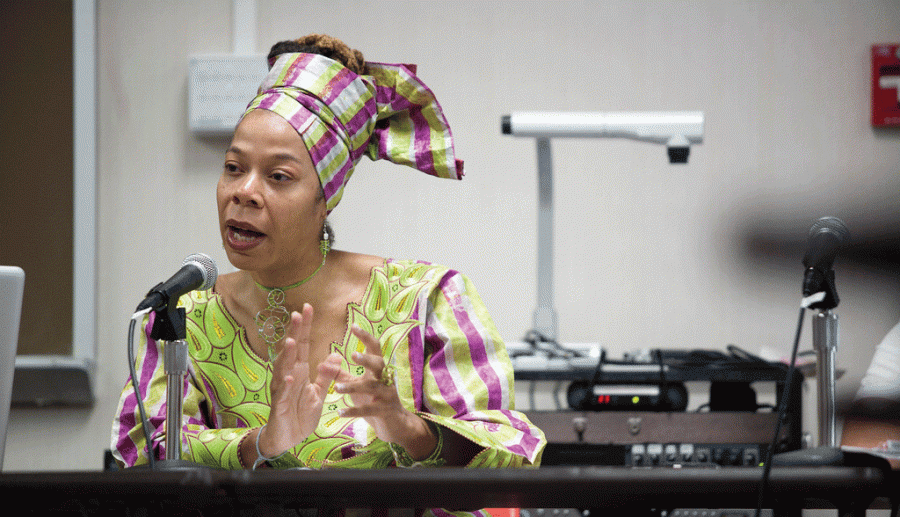Hucks Analyzes Race Through Dr. Seuss
Colgate’s newest Scholar-in-Residence, Tracey Hucks, began her two week long residency with a presentation discussing the depiction of race relations in Dr. Seuss’ children’s books. Hucks began her presentation thanking Colgate for inviting her to share her perspective at the University. Hucks also mentioned the ways in which Trump’s recent election win has been shaping race-related discussions in America today and reiterated the importance of maintaining a dialogue about race in all areas of political and social life. The event was hosted by the Africana and Latin American Studies Program and Hucks’ visit is additionally supported by the Office of the Dean of the Faculty and the Department of Religion.
Hucks received a degree in Religious Studies with a concentration on African American Studies from Colgate in 1987. Hucks explained that she started analyzing race relations through Dr. Seuss when she was a professor at Haverford College. When in the Haverford bookstore, she noticed a large Dr. Seuss book in the children’s section.
When she started reading it she immediately identified similarities between Dr. Seuss’ stories and race relations in America. She found that Dr. Seuss’ books could serve as a comfortable starting point for talking about the topic of race, which many students were uncomfortable talking about. She explained that most students had familiarity with the Dr. Seuss collection throughout their childhood making the series an accessible avenue for discussing race.
Senior Grant Siegel spoke to Hucks’ creativity in choosing Dr. Seuss as a medium for race.
“I really enjoyed the way she used Dr. Seuss and his simple stories to discuss complicated racial issues,” Siegel said.
Dr. Seuss, born Theodor Geisel, was a German immigrant who experienced Anti-german discrimination in the United States during the 1930s and 1940s. In response, he published children’s stories with racial messages that
emphasized inclusivity.
Hucks focused on his book titled, The Sneetches, published in 1953. Using a slideshow presentation, Hucks analyzed the hidden meanings within the rhymes as she projected certain pages of the book. The plot focuses on a yellow animal called the “Sneetch.” Some Sneetches have green stars on their bellies while some do not. The Sneetches with stars on their bellies believe themselves to be superior to the Sneetches without stars. Hucks pointed out the similar arbitrary nature of black versus white skin in America, and the starred versus not starred bellies of the Sneetches.
By the end of the story, the Sneetches realize the randomness of the belly stars and are able to create an inclusive society. Hucks explained that she hopes one day America can reach a similar point of enlightenment and overcome the boundaries of race.
“The event was very eye opening and provided new perspectives on race relations as depicted through Dr. Seuss’ classic, The Sneetches,” Siegel explained.
Colgate will be hosting Ms. Hucks on campus for the next two weeks to present this and many other important discussions regarding race. Her next program will be a Heretics Club lunch on February 9th in the Memorial Chapel Basement discussing “African Diasporic Religions: Healing, Resistance,
and Weaponry.”




